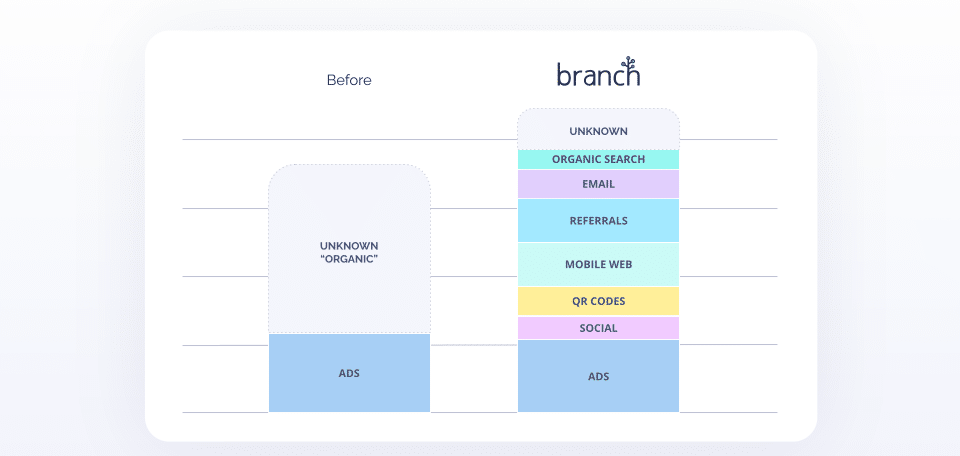It’s no question that mobile usage has increased dramatically since the start of 2020. According to one survey, U.S. consumers spend a lot of time on their phones, with 90% of that time spent in their favorite apps. Other recent data shows that consumer spending on apps increased to $135 billion across iOS and Android in 2023, and it’s well positioned for an even stronger performance in 2024.
That’s great news for mobile app developers and marketers. If you’re building a mobile app, you now have ample opportunities to increase brand awareness, foster loyal customers, and grow overall revenue. But the work doesn’t stop at building a solid app. As a marketer, you need to make users aware of your app, convince them to choose the app experience over other channels, and keep them continuously engaged and satisfied. This requires a deep understanding of the customer journey: how users find your app, interact with it, and what they like and dislike.
Here are seven ways to achieve the best return on your app investment:
- Develop an app marketing strategy
- Optimize app store listings
- Direct consumers to your app
- Implement user feedback mechanisms
- Consider app monetization
- Prioritize user retention strategies
- Attribute conversions to specific marketing channels and campaigns
Develop an app marketing strategy
Given how much of their daily lives consumers spend on mobile devices, it’s critical for brands to take advantage of increased screen time and exposure to funnel users into their apps. App marketing is a crucial component of building awareness and affinity, but it shouldn’t exist in a silo. Use existing marketing channels — including paid, owned, and earned — to promote and convey the value of your app to different audiences.
With Branch deep links, you can take app marketing campaigns to the next level by directly linking to in-app content from any channel, platform, or device. Deep links also track the source of each download or conversion, so you can optimize your app marketing strategy over time and divert more resources to the marketing channels that yield higher returns.
Optimize app store listings
The app store ecosystem is complex –– and packed. There are currently 3.3 million apps on Google Play and 2.2 million apps on the Apple App Store. With so many apps available, it’s easy to get lost in the app store noise. Spend time on app store optimization (ASO) to help consumers find, and encourage them to download, your app.
Various factors impact Google and Apple’s ranking algorithms, including app title, subtitle, description, visuals, keywords, and even in-app events and purchases. Use ASO best practices to capture users’ attention in the app store and convince them to tap “install.”
Direct consumers to your app
The lifetime value (LTV) of an app user is, on average, more than 3x higher than a web user. So, it’s advantageous for brands to turn non-app users into loyal app users at every possible touchpoint. Unfortunately, many marketing channels have made the act of getting users to your app easier said than done.
For example, you might want to use popular social media platforms to promote your app. But walled gardens are designed to keep users inside social platforms and make it difficult to link consumers to content within your app. Navigating the guesswork of the mobile linking space can be time consuming, expensive, and require significant technical expertise. This is where the right mobile linking partner comes in.
Mobile linking platforms (MLPs) simplify deep link creation, management, and measurement, so you can focus on driving conversions across any channel: email, QR codes, organic, social, or web.
At Branch, deep links power seamless user pathways to your app. Take Branch Journeys, for example. Journeys are smart web banners that guide users directly to your app. They’re equipped with different targeting methods such as behavioral and contextual attributes. By delivering a highly personalized, timely CTA to install your app, Journeys take new users directly in the app store to download your app, then resume their web activity in app.
Implement user feedback mechanisms
Imagine you’ve built the greatest app ever. If no one uses it, or if its features fail to meet expectations, consumers will begin to lose interest. To avoid high churn rates and eliminate guesswork, measure user satisfaction through various feedback mechanisms, like app reviews or even anonymous feedback forms. The best way to understand what users think of your app is to ask them directly.
Plus, roughly 60% of consumers believe the number of reviews a product has is important when determining credibility. The same goes for apps. By welcoming feedback and reviews, you’ll capture key insights that help you optimize your app over time and stand out from the already cluttered app ecosystem.
Consider app monetization
The world of app monetization has shifted dramatically over the last 10+ years. In 2009, 77% of apps on the Apple App Store required payment to download, but today that number is only 10%. With an overwhelming majority of apps now free to download, brands need to think creatively about how to earn revenue. Luckily, there are numerous avenues you can take, including in-app advertising, “freemium” subscriptions, sponsorships, and in-app purchases.
Choosing a monetization method requires careful consideration of target audience preferences, the nature of the app, market trends, and other factors to create a sustainable revenue model. Freemium models, for example, have many pros: They showcase value and build loyalty before requiring payment, are easy to adapt for many business verticals, and help avoid buyer’s remorse. On the flipside, freemium models can lead to app churn if too few or too many free features are available. Too few lead to user frustration. Too many reduce the incentive to purchase.
Prioritize user retention strategies
Once you’ve gained traction with your app, you face the hard part: engaging and retaining existing users. Retention rates are below 5% for both Apple and Android app users 30 days after download.
There are numerous ways to encourage users to stick around. Push notifications remind users of your app. Email reengagement campaigns alert users of new features or special offers. And loyalty programs encourage and reward app usage. Choosing the right method for you is all about finding what works for your audience.
In reality, apps of all sizes face the retention problem. One of the largest social platforms, Reddit, increased its retention rate by 50% by strategically implementing deep links in its campaigns. Think proactively and start early with strategies to keep users engaged and satisfied with their experience.
Attribute conversions to specific marketing channels or campaigns
Let’s face it: The consumer path to conversion is complex, and so is your job as a marketer. You figure out which marketing channels and touchpoints are responsible for conversions or installs. You also juggle allocating marketing spend to meet app growth goals over time. But how can you improve what you can’t measure?
After you build your app, find a partner that can provide insights into your marketing efforts. This is especially important if your strategy leverages numerous channels, such as paid, email, social, organic search, or ads. By analyzing attribution data, you get a full picture into which channels drive app growth and provide the best ROI. Then, you can strategize to divert marketing spend accordingly.
Many brands and Branch customers that adopt this insights-driven approach to app growth achieve impressive results, including:
- 818% return on ad spend (ROAS)
- 35% reduction in marketing costs
- 180% growth in app revenue
- 85% uplift in app installs
What’s next?
As your app grows, it is important to understand which of your efforts are driving conversions and installs, and which aren’t. Again, it’s hard to optimize what you can’t measure. By embracing a data-driven marketing strategy, you’ll give your app the best chance at success and reduce wasteful spending.
To learn more about accelerating your app growth, request a demo with our team.



